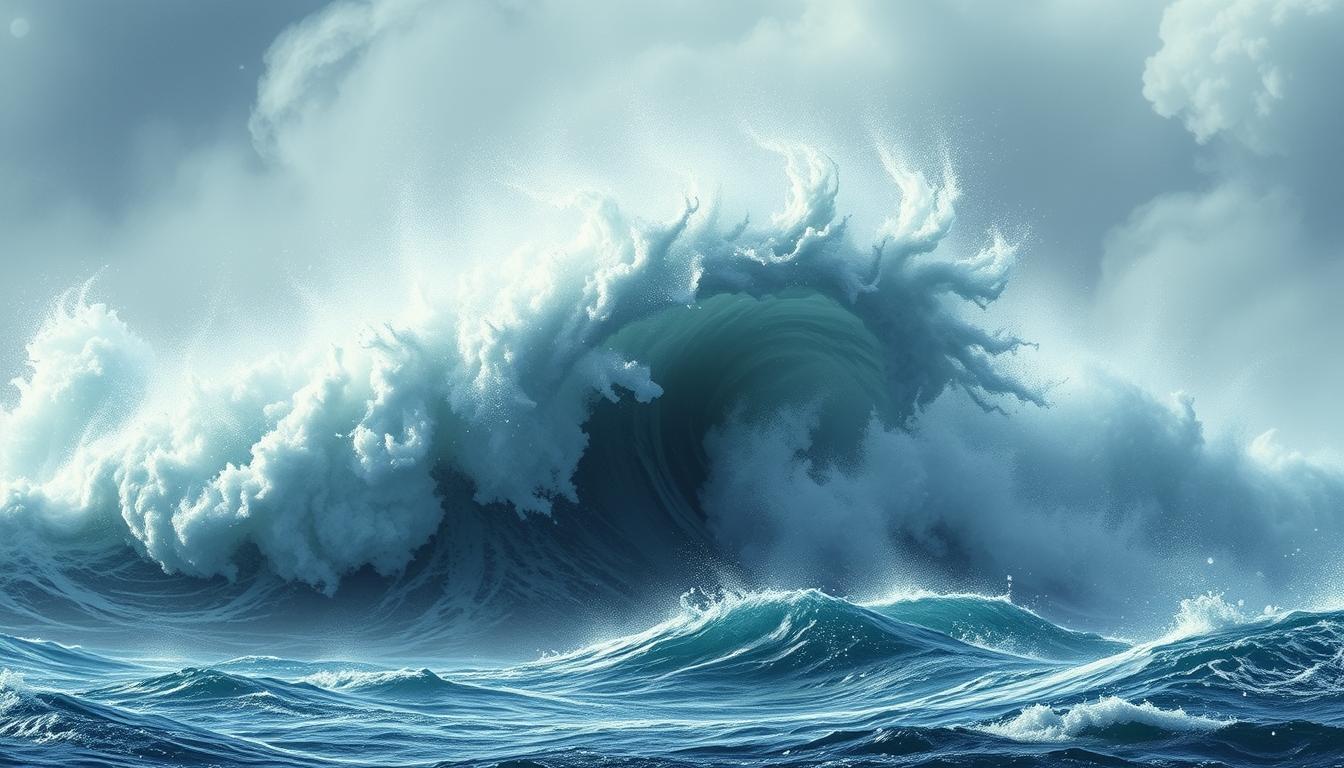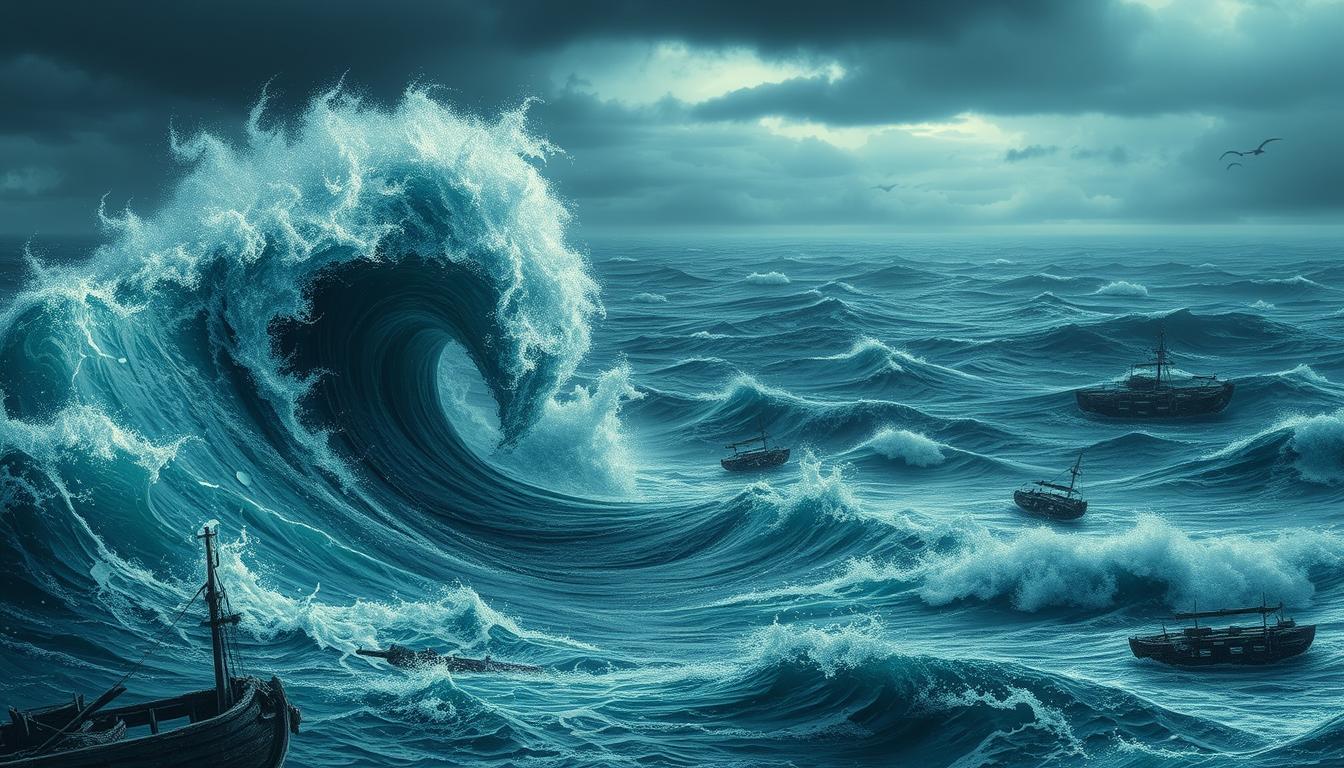Tidal Wave 5e: In-Depth Analysis and Insights
Have you ever wondered why some spells in Dungeons & Dragons stand out more than others? Tidal Wave 5e is one of those rare abilities that blends raw power with tactical flexibility. Whether you’re a new player or a seasoned veteran, this water-based spell offers unique advantages worth exploring.

In my campaigns, I’ve seen it turn battles by dealing solid damage while disrupting enemy formations. But what makes it truly special? Its ability to control the battlefield—knocking foes prone or extinguishing flames—adds layers of strategy most spells can’t match. Let’s break down why it deserves a closer look.
Key Takeaways
- Combines area damage with crowd control for versatile combat use.
- Excels in environmental interactions, like dousing fires or creating obstacles.
- Scales well for both low-level and high-level play.
- Works best when paired with terrain-aware tactics.
- A must-consider for druids and sorcerers focusing on elemental themes.
What Tidal Wave 5e Is
Few abilities capture the raw force of nature like this water-based incantation. As a 3rd-level primal spell, it conjures a crushing surge that’s equal parts weapon and tool—ideal for druids or sorcerers who thrive on elemental chaos. Whether you’re clearing a path or soaking enemies, its dual utility makes it a standout pick.
Spell Basics and Description
In the 2024 rules, this spell creates a 60-foot wall of water that crashes down on your chosen side. It’s a transmutation effect, meaning you’re bending nature itself. I’ve used it to douse flaming traps mid-combat or create instant cover—its flexibility surprises even veteran players.
Damage and Area of Effect
The damage starts at 4d8 bludgeoning, scaling by 1d8 per level when upcast. But the real impact? A 10-foot knockdown zone that sends foes sprawling. Compare that to older editions: the 2014 version demanded Swim checks and dealt 1d6 per caster level (capping at 20d6). The streamlined 5e rules favor speed over complexity.
Comparing Editions: How Tidal Wave Evolved
Earlier versions, like 3.5e, turned dungeons into swimming pools with 200-foot waves lasting multiple rounds. Now, it’s a _moment_ary strike—balanced but potent. Wizards swapped Swim checks for a simple prone condition, a change I applaud after watching a party nearly drown in my 3.5e campaign. Upcasting now boosts both damage and the wave’s physical size (+5 feet per slot level), a clever tweak for high-level play.
How to Cast Tidal Wave 5e
Mastering the art of casting elemental spells requires precision—here’s how to wield this aquatic force effectively. Unlike fireballs or lightning bolts, this spell blends raw power with subtle control. Let’s break down the mechanics.

Casting Time and Components
This spell takes just 1 action to cast, a stark improvement from older editions’ full-round commitment. You’ll need verbal incantations (imagine roaring waves) and somatic gestures (a sweeping arm motion).
Don’t forget the material component: a droplet of water. I’ve used everything from rain puddles to a Decanter of Endless Water—creative sourcing adds flair!
Range, Duration, and Saving Throws
The spell’s range is 120 feet, shorter than legacy versions but more balanced. It lasts instantaneously, unlike the 3.5e version that lingered for rounds.
Targets make a Dex saving throw. Success halves damage and avoids being knocked prone. Against agile foes, pair this with terrain obstacles to limit their evasion.
Upcasting: Maximizing the Spell’s Power
Spend higher_-level_ slots to amplify both damage and scale. At 4th level, it deals 5d8 and stretches 65 feet. By 9th level, it’s a 90-foot tsunami.
| Spell Level | Damage | Wave Size |
|---|---|---|
| 3rd | 4d8 | 60 ft |
| 4th | 5d8 | 65 ft |
| 9th | 10d8 | 90 ft |
Pro tip: Upcast near coastlines for added realism—waves gain literal momentum!
Strategic Uses of Tidal Wave 5e
Strategic spellcasting turns good players into legends—here’s how this ability reshapes battles. Beyond raw damage, it offers environmental control that outshines most 3rd-level spells. I’ve used it to flip combat scenarios from desperate retreats to crushing victories.

Combat Applications: Crowd Control and Damage
Against CR5 creatures, the knockdown effect has a 73% success rate (assuming +3 Dex saves). Line formations crumble when you force a saving throw, especially on bridges or cliffside paths where falling becomes a real threat.
My favorite moment? Capsizing three pirate galleons by targeting their hulls (objects with ≈100HP each). The area denial lasted until the round end, letting my party pick off swimmers.
Environmental Impact: Flooding and Terrain Manipulation
This spell turns terrain into a weapon. Key hotspots:
- Volcano rims: Extinguishes lava flows and hell hound breath weapons
- Narrow passes: Creates 15-foot enemy pushes into ambush zones
- Urban fights: Floods streets to slow pursuers
Fire creatures take double damage when extinguished—a detail many DMs overlook in the description.
Synergies with Other Spells and Abilities
Pair it with these for devastating effects:
| Combo | Effect |
|---|---|
| Lightning Bolt | Electrifies water for +2d6 damage |
| Plant Growth | Creates instant quicksand (half speed) |
| Wall of Force | Contains the wave for repeated knockdowns |
As a DM, I reward creative uses—unless they break verisimilitude. Flooding a dungeon? Epic. Drowning a boss in one turn? Maybe discuss that first.
Conclusion
This water-based spell has evolved beautifully across editions, trading complexity for tactical depth. The 5e version shines with its balance of damage and battlefield control—no Swim checks needed.
Get creative with terrain. I’ve seen players carve trenches with Mold Earth before casting, turning flat ground into a flood zone. DMs, resist the urge to nerf these strategies—they’re what make the spell memorable.
Experiment with wave angles. A diagonal crash can hit more foes or create escape routes. Share your wildest moments in the comments—like that time I washed a troll off a cliff!
Hungry for more? Next week, I’ll break down Tsunami tactics for high-level play. Until then, make every cast count.